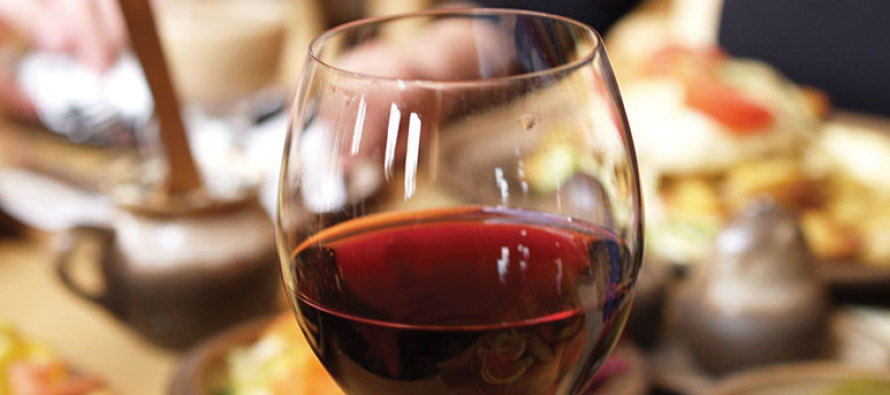Winter Reds

Summer is lovely. It’s warm outside, and the perfect time to enjoy a crisp, refreshing glass of white wine. In the middle of winter, many yearn for the long days of summer. True, winter may be cold and dark, but don’t overlook the charm and romance it can bring. It may be cold outside, but it’s so very nice to cuddle up at home in a comfy sweater and warm socks. Now is not the time for a crisp glass of white wine, but for a full, rich red that will warm you from the inside out.
Red wine may seem to be a bit of a mystery, but it doesn’t have to be. How reds come about is actually quite simple. Reds are made from red (or purple, blue or black) grapes. The presence of color and tannin are achieved by the juice coming into contact with the grape skins during the fermentation process.
You have probably heard people talk about tannins, but understanding what they mean to a wine will help you determine which wine is right for you. Tannins are what give red wines their complexity and that mouth-drying sensation. They also give wines body, or firmness. Over time, tannins mellow and blend with the other characteristic of the wine, which is why reds age well. White wines lack tannin, so they are light and crisp. Reds contain tannin, and that’s why they are heavier, and feel silky and firm in your mouth. This makes them perfect for a cold winter evening.
Red wines are characterized as light bodied, medium bodied and full bodied. The lighter bodied the wine; the less tannins are present in it. Conversely, the fuller bodied the wine, the more tannins, and therefore tannic characteristics, the wine has.
Light bodied wines generally have less presence on the palate, and seem lighter. The texture of light-bodied wines is more like that of water. Examples of light-bodied wines are Beaujolais-Nouveau and Pinot Noir.
Medium bodied wines are right in the middle. They have more tannins than light-bodied and less than full-bodied wines. They feel heavier on the palate than light bodied wines, and the texture is a little thicker than water. Medium bodied reds include such crowd pleasers as Merlot, Shiraz and Chianti.
Full bodied reds are the big boys of wine. They have the highest tannin content, and often, the highest alcohol content. They are the heaviest, and the texture seems closer to milk than water. The tannins will make your mouth pucker, and the taste is rich and deep. Full bodied wines include Bordeaux, Cabernet and Zinfandel.
After choosing the perfect red, serve it in a way that will maximize your enjoyment. Red wines should not be chilled. They should be served at a temperature ranging from 56 to 68 degrees Fahrenheit. Serve a red too warm, and the taste of alcohol can overwhelm the flavor. Serve it too cold, and it can taste bitter and flavorless. Just below room temperature, around 60 degrees, is pretty close to perfect for most any red.
The glass the wine is served in is equally important to your enjoyment of it. Red wines need to breathe, and therefore need more surface area exposed to the air. The wine glass needs to be a bigger bowl type glass that just narrows at the top. It needs to have a minimum capacity of 10 ounces, to allow the wine to breathe. You also want to allow enough room to swirl the wine without sloshing it everywhere.
So go buy a great bottle of red to enjoy this evening. If you’re not sure what type you prefer, there are many locations locally that have wine tastings regularly. Local wine shops are a great place to get advice and ask questions. The purveyors are happy to answer your questions. They want you to get a wine you enjoy. So have a happy winter this year, and let a great red wine help you appreciate the season.
No comments
Write a commentOnly registered users can comment.











